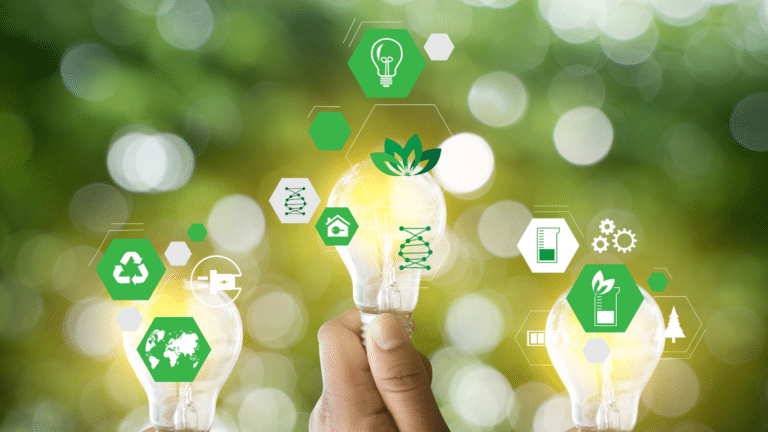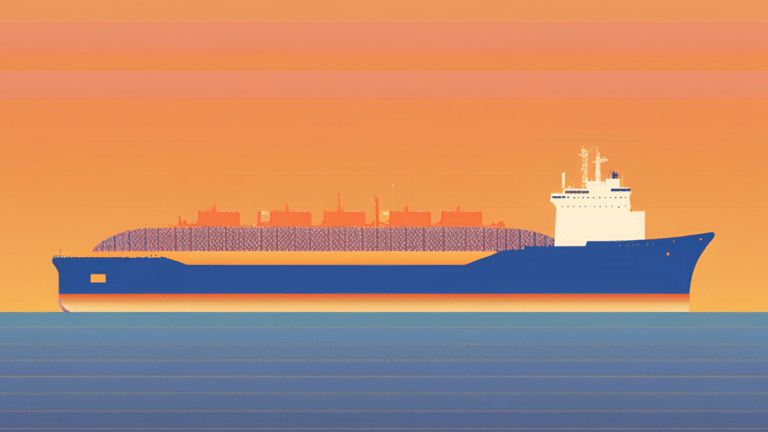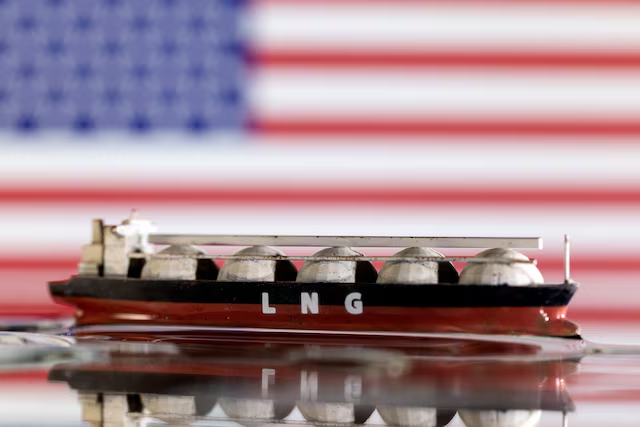This commentary represents the research and views of the author. It does not necessarily represent the views of the Center on Global Energy Policy. The piece may be subject to further revision. Contributions to SIPA for the benefit of CGEP are general use gifts, which gives the Center discretion in how it allocates these funds. More information is available at Our Partners. Rare cases of sponsored projects are clearly indicated.
The recent spike in energy prices across the globe has led to talks of an energy crisis with far reaching repercussions as the Northern Hemisphere braces for winter. While a significant focus has been on natural gas as gas spot prices in Asia and Europe hit levels unthinkable before ($56/million British thermal unit [mmBtu], or over $320/barrel [bbl] in oil-equivalent terms), the crisis has extended well beyond gas: oil prices are rising, China and Europe are facing record coal prices, and carbon prices in Europe have reached historic levels. As gas-fired plants (or coal in some regions) are at the margin, this is also leading to record power prices in different parts of the world. These circumstances lead to immediate concerns, but also flag important potential lessons for the future.
In the short term, immediate concerns include a potential gas supply and power crunch over the coming winter, the impact of record-high gas and electricity prices on end-users’ energy bills, and power shortages. For natural gas, however, the crisis may extend beyond the weather. The role of natural gas in a world looking to slash carbon emissions has been an ongoing topic of discussion, and the potential for a sustained crisis that batters consumers may have critical repercussions for the fuel longer term.
Already, at least two schools of thought are emerging from the current situation that reflect the ongoing debate about natural gas: one that views this episode as further proof that the world needs to rapidly get rid of fossil fuels, including natural gas, and one that views it as proof that more gas is needed in the immediate future to satisfy growing global energy demand. Questions of security of supply and affordability are also part of the discussion, especially in a future world with a higher share of renewables but where fossil fuels are still necessary to provide flexibility and are likely to continue to set power prices at the margin until new flexibility tools such as batteries or demand-side management are developed at scale. In addition, there are concerns about another widespread gilets jaunes[1] protest movement triggered by price spikes as governments push their agenda for decarbonization.
For the gas industry, it could prove to be a moment of truth. The IEA stated earlier this year that “no new oil and natural gas fields are needed in the net-zero pathway.”[2] Indeed, producers are facing increased scrutiny about future investments, including in upstream activities and liquefied natural gas (LNG), but at the same time are asked to make gas readily available when needed.[3] Meanwhile, developing countries that had been looking favorably at natural gas as a way to complement renewables and decommission coal could be deterred by these high and volatile gas prices from supporting LNG imports. The recent increase in gas prices could impact these decisions in different ways, especially if they remain high for the next few years.
This commentary provides a brief overview of the current gas market and examines the potential near- and longer-term impacts for natural gas.
Why Gas Prices Have Skyrocketed
At the end of 2020, after a year of record low gas prices, the jump to current prices may have seemed unlikely. In fact, the price increase has been progressive over the year and the alarm bells only rang recently. To reach these record high levels, several factors combined that had a multiplier effect on prices: a strong economic rebound; weather patterns that exacerbated heating and cooling demand; lower availability of wind and hydro; a vicious commodity cycle involving gas, coal, and carbon prices; and supply issues within the gas and coal markets.
It all started with extremely cold weather in Asia in January 2021, for which Asia was unusually ill prepared. The perception that spot cargoes would be easily available faced the reality of LNG supply issues and constraints through the Panama Canal.[4] Japan Korea Marker (JKM) prices reached their highest daily level at that time ($32.5/mmBtu).
At the same time, Asian LNG demand continued to grow, in part due to a very strong rebound of industrial activity, continuous coal-to-gas switching, and low hydro levels that made China the largest LNG importer in the first half of 2021.[5] Japan, Korea, and Taiwan’s LNG demand increased as well due to an economic rebound, restrictions on coal-fired generation, low nuclear output, and cold weather.[6] Southeast Asian LNG demand was also resilient and Latin American LNG demand rebounded.
However, this increase in LNG demand outside Europe was not matched by LNG supply. Despite significant LNG capacity additions, notably in the United States, delayed maintenance, outages, and temporary reductions restricted output in countries such as Algeria, Australia, Nigeria, Norway, Peru, Trinidad, and the United States.
Reduced LNG volumes available for Europe—the balancing market for global LNG trade, able to absorb LNG surplus or reduce LNG imports —occurred as the region’s gas demand was rising again due to a long and cold winter, economic recovery, and lower wind and hydro generation. Combined with falling European gas production, this led to an increase in import needs. Some relief came from higher pipeline supplies from Algeria, Azerbaijan, and Russia, although Russian supplies remained below 2019 levels.[7] While some market participants had been looking for additional deliveries through Ukraine or an early start of Nord Stream 2 (a pipeline that links Russia to Germany directly), this has not materialized yet. Whether Russia is unable to supply more due to its high domestic gas demand and needs to inject gas in storage, or whether it is unwilling to after over 15 years of frosty relations with Europe regarding gas supplies and more recently regarding the Nord Stream 2 pipeline, is not clear. But unlike Norway,[8] which allowed Equinor and its partners to increase gas production from two fields, Russia does not seem to have made any effort to supply additional volumes so far.
On the demand side, high coal and carbon prices not only supported stronger gas prices but the current widespread shortages in global coal markets mean that significant additional switching from gas to coal is limited.
This leaves European underground gas storage levels, which were already depleted at the end of the withdrawal season, low: as of mid-October, they are 77 percent full, about 14 percent lower than the 5-year average.
Key Concerns in the Short Term
As the winter season starts, immediate key concerns include the levels of gas, coal and power prices, and the extent of potential gas and power shortages. The gas situation creates risks that extend beyond residential users and Europe. Some industrial gas users have already been forced to reduce or cease operations, including fertilizer producer CF industries in the UK and BASF in Germany and Belgium, an early sign of high gas and power prices impacting demand in regions exposed to gas spot prices.[9] In China, a power crunch is also already leading to closures of factories,[10] and the same may happen very soon in India due to a shortage in coal.[11] While demand rationing in industry as a reaction to high energy prices appears to be a natural consequence, it has not yet proven sufficient to reverse the increase in gas prices—or maybe it has just prevented further increases. It could also have an impact on the global economy as a whole if enough factories stop producing, given the existing shortages in different sub-sectors. Knock-on effects are also possible when some industrials cut production; for example, fertilizer producers also produce carbon dioxide as a by-product that food suppliers use.
Against this backdrop, many residential users, depending on their countries’ tariffs,[12] have already seen their gas and electricity bills increase substantially. The French energy regulator estimates that a household’s gas bill as of October 2021 (based on regulated tariffs) would increase by 29 percent against January 2019 and by 52 percent against January 2021.[13] Meanwhile, a few gas and power suppliers in the UK and Singapore[14] have already collapsed under the pressure of high gas and power prices. While gas and power supplies are still ensured, users will be assigned to a new supplier that will put them on a new tariff—which may be higher that their previous one.
Importantly, not all gas consumers and regions will be equally impacted. Around a third of global gas consumption is based on regulated prices,[15] which should shelter those consumers. In addition, Asian importers that have oil-indexed LNG contracts are paying much lower LNG prices (in the $8–$10/mmBtu range), but some Asian importers are paying JKM prices for cargoes.
Relief from higher prices could come if either Europe or Northeast Asia experience a mild winter. Similarly, higher rainfall to replenish hydro supplies or wind conditions to bolster wind generation would help increase supplies on the power side.
On the supply side, it is uncertain whether any of the LNG suppliers producing at lower rates would be able to increase LNG output. A few trains (liquefaction facilities) have come back from maintenance: Peru LNG, Freeport, and Cove Point, both in the United States. Two new LNG facilities are expected to start up in the coming months in the United States —Calcasieu Pass and Sabine Train 6—although production will need time to ramp up after they start.
High Asian and European gas prices have already led to higher US gas prices, albeit to a much smaller extent. Further increases could happen, depending on the trajectory of domestic demand, gas supply, and the call on US exports. US gas production has not been increasing massively as companies prioritized shareholders’ returns and debt repayment instead of increasing production.[16] Increasing LNG exports could therefore translate into higher US gas prices. Even if US gas prices were to reach above $10/mmBtu, LNG prices in Asia or Europe at $30/mmBtu still mean that LNG exporters will prefer to export rather than selling on the domestic market. Any additional LNG could potentially be directed to the market offering the best netback, whether it is Asia, Europe or even Latin America.
Whether Russia is able and willing to produce and export more pipeline gas to Europe—should the approval process to use Nord Stream 2 be accelerated—is uncertain. Despite announcing flows of over 5 billion cubic meters (bcm) for the rest of 2021 through Nord Stream 2[17] and talk from President Vladimir Putin that Russia was ready to work on stabilizing the global energy market,[18] little has been said about how much additional pipeline gas supplies would actually be available for Europe. Therefore, it is not clear how much tightness would be alleviated should Nord Stream 2 come online.
Europe’s low natural gas storage levels are a source of concern for two reasons. While Europe’s gas inventories could prove sufficient for the winter—especially if withdrawal from storage starts later than usual—a repeat of last winter could leave storage critically low, at around 100 terawatt hours (TWh). Also, withdrawal rates tend to deteriorate when storage levels go down, lowering storage’s effectiveness in case of a late cold snap. Additionally, European gas production has dropped by 18 percent over 2015–20[19] and further dropped in 2021, while one crucial source of virtual storage, the Dutch Groningen field, has almost disappeared, leaving Europe more exposed to imports.
Proposals that Europe should have “joint procurement of reserve stocks of gas”[20] are unlikely to help the short-term issue of buying gas supplies and could face significant implementation issues, such as how these volumes would be shared among countries. According to the European Commission document,[21] the scheme would be “voluntary” and “respect competition rules.” Given that national European markets are deeply interconnected (even with the UK), gas supplies will move according to price signals. A similar measure was once proposed to buy gas supplies from the Caspian region (the Caspian Development Corporation)[22], and failed after lengthy discussions. One reason was that the DG Competition did not want a consortium of buyers.
One typical response when supply fails is to switch to other sources of energy. Switching to coal has already been happening in Asia, Europe, and the United States, but the coal market is also facing shortages. Additional switching is reasonably expected to be limited by the availability of spot cargoes of coal, for which there is intense competition. China, which represents half of the world’s demand, has been ready to pay any price for coal, as it is facing significant power shortages,[23] while India, another large coal user and importer, has low coal stockpiles. A number of states are concerned about potential blackouts.[24] What’s more, coal-fired generation in Europe fell by around 400 TWh (-43 percent) over the past 5 years and dropped by 17 percent in 2020.[25] Even though the trend reversed in 2021, several coal-fired plants were decommissioned, reducing Europe’s ability to switch to coal-fired plants.
Switching to oil offers some relief, but there is little oil used in the power generation sector. Oil represents less than 3 percent of global power generation,[26] half of which is in the Middle East. There could be some switching in Asia, in countries such as Bangladesh, Japan, and Pakistan, which still have some oil-fired capacity.[27] Switching potential exists in the industrial sector, notably for fertilizers or other energy intensive industries: switching to naphtha in energy-intensive industries has been reported in India.[28]
Finally, there is no magic switch to increase wind and solar generation on demand, while hydro depends on rainfalls.
Should gas spot prices remain at elevated levels over the coming months (anything above $15/mmBtu is high for Asia and Europe from a historical point of view), governments may act to protect consumers and avoid hindering the energy transition in the long term. Governments are already moving to protect the most vulnerable consumers from hefty bills, but some creative thinking may be needed, using different fiscal and tariff tools to lower or smooth peaks. Particular attention should be given to the most vulnerable residential users through direct financial help, but some companies already weakened by Covid could also be needing help. The European Commission published a toolbox of measures to protect consumers.[29]
It could also be a good time for governments looking to reduce demand to raise citizens’ awareness of measures that can cut electricity and gas consumption.[30] Otherwise it is likely that the burden of reducing demand will fall on industrial users as the pain from expensive energy builds up.
Long-Term Implications
As policy makers and energy players meet next month at COP26 in Glasgow, high energy prices will likely be a topic of discussion as they take stock of the current situation and attempt to draw some lessons for the future. The discussion could once again see two sides face off: those arguing in favor of accelerating the transition away from fossil fuels and those who argue that fossil fuels are still needed in the immediate future as global energy demand grows and renewables build up. These two schools of thought are likely to highlight significant regional disparity: some developing countries are still looking favorably at natural gas as a way to displace coal and meet their growing energy demand. Beyond reducing emissions, two other elements are likely to be hot topics at COP26: security of supply and affordability.
Ensuring that energy, including natural gas, remains affordable and available during the energy transition is likely to be a key concern for policy makers. A world where demand for fossil fuels declines has often been presented as one with lower fossil fuel prices. In the IEA Net Zero report,[31] natural gas prices over the next three decades are low from a historical perspective (around $2/mmBtu in the United States, around $4/mmBtu in Europe, and between around $4 and $5/mmBtu in China and Japan). What the present energy crisis shows is that there could be times when significant demand and supply variations and mismatches lead to tight fossil fuel markets and therefore to extreme volatility and price spikes, which impact power markets as well.
In a world with more electrification and growing renewables, there will still be a need for dispatchable capacity for the foreseeable future, which is likely to be gas-based. Consequently, gas price spikes could spill over onto the power system, especially if unusual weather patterns affect the availability of renewables, hydro, or nuclear, while insufficient gas supply could lead to power shortages. Citizens in developed countries are unlikely to give up on the comfort of having electricity or gas readily available, while there are still significant number of citizens facing energy poverty. Meanwhile, many developing countries are looking to increase affordable access to electricity and clean cooking. As nations move to decarbonize their energy system and demand for each fossil fuel eventually peaks, the issue for policy makers across the world is how to avoid significant mismatches between supply and demand, develop a regulatory toolbox to reduce the exposure to price spikes and ensure there is no power shortage, and plan ahead to make future energy systems climate resilient. Finally, the geopolitical aspect won’t disappear as oil and gas supplies become increasingly concentrated in a small number of producers.[32]
In order to mitigate these concerns, governments (especially in developed countries) seeking to ensure a fair and just transition should first focus on the demand side. In high-income countries, there may be room for residential energy consumption to go down without affecting quality of life. The same could apply for small businesses and industrials. Whether gas or electricity is used for heating, reducing consumption would reduce heating bills and also protect consumers better against price spikes. In the current crisis, governments likely have no other option but to offer monetary help to end users to buffer these impacts. Beyond this winter, however, a renewed focus on energy efficiency and the poorest end users, such as those living in poorly insulated houses, would help toward the goals of realizing a fair and just transition. This would require thinking and adaptation that takes into account specific conditions: for example, insulating a house may simply be unaffordable for a household that can barely makes ends meet—even if the state covers 80 percent of the costs.
This crisis is happening at a crucial time for the natural gas industry as it increasingly faces the question of whether gas is a transition fuel and how much investment is needed. Should high gas prices continue for an extended period, that could accelerate the pace of demand decline in developed economies. This could happen through an accelerated expansion of renewables, including biomethane, which could suddenly look more competitive against natural gas, or by putting some question marks on the competitiveness of blue hydrogen (which uses fossil fuels with carbon capture) against green hydrogen. Crucially, it could also reduce future growth in developing countries that had until now looked favorably at gas as a path to decarbonization.[33]
Gas is often presented as secure and affordable, but the current high prices could undermine coal-to-gas switching in Asia, especially if there is an extended period of double-digit prices. Now that Chinese President Xi Jinping has pledged to stop financing overseas coal-fired power plants, after Japan and Korea had already announced similar measures,[34] Asian countries are left with fewer choices for the power and industrial sectors. However, South Asia is particularly price-sensitive and wholesale gas prices typically range from roughly $3.5–$7/mmBtu.[35] While South Asian countries can still rely on cheaper domestic gas production, many have been or plan to become more reliant on LNG imports. Affordable but also cleaner gas and LNG will be an important consideration in efforts to keep energy prices low. Besides South Asia, China’s pledge to reach carbon neutrality by 2060 has left many uncertainties about how large the role of gas will be, both in the medium and long term. Whether gas remains part of that solution will likely depend on the future gas price evolution as well as the availability of future LNG supplies with a lower environmental footprint, a feature that will also have a cost.
For LNG exporters, the window during which they could take final investment decision (FID) is shrinking as the concept of peak gas and LNG demand over the coming two decades has become more widely accepted. Moving an LNG project this decade is therefore crucial. High gas prices have already rekindled interest from LNG suppliers. Still, any LNG project currently looking at taking FID in the coming year or two would not benefit from the current high gas prices because it would likely come online after 2025 when prices are expected to come down due to the start of several LNG projects, notably in Qatar. Not only could the current price environment put downward pressure on future demand, it could also complicate and lengthen contract negotiations. For example, it could push buyers back toward oil indexation if it is seen as less volatile and lower than spot prices, reversing a recent trend toward more spot indexation. Oil indexation had been criticized for being responsible for the high prices in the early 2010s, the lack of responsiveness to supply/demand changes, and the fact that oil and gas have different fundamentals.[36] However, given the current levels of spot prices, a spot indexation may now look less appealing. The next few months may also show whether spot indexation or HH indexation—a key feature of US LNG exports—are still viewed favorably, as well as whether the high gas price environment has been favorable to LNG investments on the supply and demand sides.
Beyond that stands the question on how to decarbonize and reduce fossil fuel (including gas) consumption while avoiding shortages and price spikes due to supply and demand mismatches like the one we are seeing now. It also poses the question about where future investments should be made in the gas value chain. Even in a world that is becoming more electrified, the linkages between the power and gas markets may not disappear rapidly. Fossil fuels remain vital components of the energy system for the time being, especially when it comes to providing flexibility to the power system. Until there are other flexibility options built at a significant scale, gas-fired generation will likely remain a key tool to balance electricity markets as renewables generation grows. This will be even more crucial for countries where firm capacity drops due to coal and nuclear decommissioning.
The current crisis raises the question of whether such episodes of volatility and very high gas prices could occur more frequently in the future. There might be a period during the energy transition when gas prices could indeed become even more volatile. Until now, Europe has been able to act as the balancing market on global LNG markets because of three key features: the ability to switch between coal and gas in the power sector, flexibility from pipeline suppliers, and large storage capacity (about 20 percent of Europe’s total demand). While renewable generation increases, Europe will reduce its coal-fired generation, implying that the ability of the European gas market to accommodate global gas imbalances may be reduced to storage and pipeline supplies therefore increasing the potential risk of price volatility. More flexibility in the power market will certainly be needed with technologies such as batteries, demand side management, and possibly hydrogen. But this will also happen in the context of an expected radical change on how gas markets themselves operate in Europe with an increasing amount of low-carbon gases—biogas, biomethane, and hydrogen—playing a role alongside declining gas consumption. In the US, the role of gas in power will likely follow a similar evolution as in Europe, as coal-fired generation declines and renewables grow. The US could possibly become a balancing supplier in global LNG markets as it did in 2020 and 2021, with implications for US gas prices: more than 10 percent of US gas production is already exported and that volume is likely to grow as more export projects come onstream and domestic demand for natural gas drops.
Finally, as the world moves toward more decarbonization, governments and companies will have to change their concept and approach to security of energy supply. One element that this crisis has shown is that renewable energy supply could be lower than expected while extreme weather events exacerbate the demand for energy. Governments and energy stakeholders should prepare and anticipate these new risks if they want to minimize future price spikes or energy shortages. Energy systems will not only become more electrified, along with the emergence of hydrogen and other low-carbon fuels, but they also will likely face different risks, including weather risks. Security of energy supply concerns and analyses in the future could shift from the Strait of Hormuz or a pipeline from Russia to the resilience of the energy system with a higher share of renewables against heatwaves, cold snaps, and hurricanes. Governments and companies therefore need to make climate resilience a central part of future planning.
Notes
[1] Gilets jaunes (or yellow vests in English) refers to a protest movement that started in France in late 2018. It started as a protest against the increase in transport fuel prices notably due to increased taxes.
[2] International Energy Agency, “Pathway to critical and formidable goal of net-zero emissions by 2050 is narrow but brings huge benefits, according to IEA special report,” 18 May 2021, https://www.iea.org/news/pathway-to-critical-and-formidable-goal-of-net-zero-emissions-by-2050-is-narrow-but-brings-huge-benefits.
[3] International Energy Agency, “Statement on recent developments in natural gas and electricity markets,” September 21, 2021, https://www.iea.org/news/statement-on-recent-developments-in-natural-gas-and-electricity-markets.
[4] G. Thomson, “Making sense of Asia’s sky high spot LNG prices”, Wood Mackenzie, January 20, 2021, https://www.woodmac.com/news/opinion/making-sense-of-asias-sky-high-spot…
[5] A. Froley, “China overtakes Japan as world’s largest LNG importer”, ICIS, June 8, 2021, https://www.icis.com/explore/resources/news/2021/06/30/10658118/china-ov….
[6] S. Elliott, “Infographic: Sky’s the limit? Global gas prices on stellar rally”, S&P Platts, September 14, 2021, https://www.spglobal.com/platts/en/market-insights/latest-news/natural-gas/091421-infographic-skys-the-limit-global-gas-prices-stellar-rally-winter-lng-cargoes-storage-russia-power.
[7] The Oxford Institute for Energy Studies, Why Are Gas Prices So High?, September 2021, https://www.oxfordenergy.org/wpcms/wp-content/uploads/2021/09/Why-Are-Gas-Prices-So-High.pdf.
[8] P. Shrestha, “Norway to increase gas exports to Europe as prices rise”, Energy Live News, September 21, 2021, https://www.energylivenews.com/2021/09/21/norway-to-increase-gas-exports-to-europe-as-prices-rise/.
[9] S. Pfeifer et all, “European industry fears threat to recovery from rising gas prices”, Financial Times, October 6, 2021, https://www.ft.com/content/d2569332-5e00-48bc-b7c6-7d4265920d26.
[10] S. Singh and M. Zhang, “China power crunch spreads, shutting factories and dimming growth outlook”, Reuters, September 27, 2021, https://www.reuters.com/world/china/chinas-power-crunch-begins-weigh-economic-outlook-2021-09-27/.
[11] S. Sundria et al., “As coal stocks shrink, India faces growing energy shortage crisis”, Aljazeera, October 6, 2021, https://www.aljazeera.com/economy/2021/10/6/as-coal-stocks-shrink-india-faces-escalating-power-crisis.
[12] Some gas tariffs are fixed for a certain duration, therefore protecting users against short-term increases.
[13] Commission de Régulation de l’Énergie, “La CRE constate une nouvelle hausse du coût du gaz naturel importé entrainant une hausse des tarifs réglementés de vente de gaz naturel pour le mois d’octobre”, September 21, 2021, https://www.cre.fr/Actualites/la-cre-constate-une-nouvelle-hausse-du-cout-du-gaz-naturel-importe-entrainant-une-hausse-des-tarifs-reglementes-de-vente-de-gaz-naturel-pour-le-moi.
[14] S. Stapczynski and D. Murtaugh, “Global energy crisis hits Singapore as power provider goes bust”, Bloomberg, October 14, 2021, https://www.bnnbloomberg.ca/global-energy-crisis-hits-singapore-as-power….
[15] International Gas Union, Global Wholesale Gas Price Survey 2021, July 8, 2021, https://www.igu.org/resources/global-wholesale-gas-price-survey-2021/.
[16] K. Hallahan, “Henry Hub could reach $12-$14 this winter as capital discipline limits supply growth: Platts Analytics”, S&P platts, October 15, 2021, https://www.spglobal.com/platts/en/market-insights/latest-news/natural-g….
[17] V. Soldatkin, “UPDATE 4-Russia expects Nord Stream 2 to deliver 5.6 bcm of gas this year”, Reuters, August 19, 2021, https://www.reuters.com/article/nordstream-outlook-idUSL1N2PQ18X.
[18] G. Kantchev and J. Wallace, “Natural Gas Prices Take Wild Ride After Putin Comments”, The Wall Street Journal, October 6, 2021, https://www.wsj.com/articles/natural-gas-prices-take-wild-ride-after-putin-comments-11633541137.
[19] bp, Statistical Review of World Energy, July 2021, https://www.bp.com/en/global/corporate/energy-economics/statistical-review-of-world-energy.html.
[20] The European Commission, “Tackling rising energy prices: a toolbox for action and support”, October 13, 2021, https://ec.europa.eu/energy/sites/default/files/tackling_rising_energy_p….
[21] Ibid.
[22] European Commission, “Caspian Development Corporation”, December 2010, https:// ec.europa.eu/energy/sites/default/files/documents/2010_12_report_cdc_final_implementation.pdf.
[23] S. Stapczynski et al., “China’s coal shortage could leave other countries in the dust”, Aljazeera, September 28, 2021, https://www.aljazeera.com/economy/2021/9/28/chinas-coal-shortage-could-leave-other-countries-in-the-dust.
[24] K. Singh, “Explained: How severe is India’s coal crisis, and what is the govt doing to address it?”, Indian Express, October 14, 2021, https://indianexpress.com/article/explained/how-severe-is-india-coal-cri….
[25] Europe is defined based on bp Statistical Review numbers as Europe minus Ukraine.
[26] bp, Statistical Review of World Energy, July 2021, https://www.bp.com/en/global/corporate/energy-economics/statistical-review-of-world-energy.html.
[27] Organization for Cross-regional Coordination of Transmission Operators, Japan, Annual Report: Fiscal Year 2019, February 2020, https://www.occto.or.jp/en/information_disclosure/annual_report/files/annual_report_FY2019.pdf.
[28] Energy Voice, “LNG suppliers focus on spot deals in price jump, Gail India says”, September 23, 2021, https://www.energyvoice.com/oilandgas/asia/351617/lng-suppliers-focus-on-spot-deals-in-price-jump-gail-india-says/.
[29] The European Commission, “Tackling rising energy prices: a toolbox for action and support”, October 13, 2021, https://ec.europa.eu/energy/sites/default/files/tackling_rising_energy_p….
[30] Agir pour la transition écologique, “20 solutions pour réduire sa consommation d’électricité”, May 17, 2021, https://agirpourlatransition.ademe.fr/particuliers/maison/economies-denergie/20-solutions-reduire-consommation-delectricite.
[31] International Energy Agency, “Net Zero by 2050”, May 17, 2021, https://www.iea.org/reports/net-zero-by-2050.
[32] International Energy Agency, World Energy Outlook 2021, October 2021, https://www.iea.org/reports/world-energy-outlook-2021.
[33] K. Adler, “Natural gas, renewables key to India’s decarbonization: Modi”, IHS Markit, January 7, 2021, https://ihsmarkit.com/research-analysis/natural-gas-renewables-key-to-india-decarbonization.html.
[34] S. Liu et al., “South Korea and Japan Will End Overseas Coal Financing. Will China Catch Up?”, World Resources Institute, June 14, 2021, https://www.wri.org/insights/south-korea-and-japan-will-end-overseas-coal-financing-will-china-catch.
[35] International Gas Union, Global Wholesale Gas Price Survey 2021, July 8, 2021, https://www.igu.org/resources/global-wholesale-gas-price-survey-2021/.
[36] A. Corbeau et all, “The Asian quest for LNG in a globalising market”, November 2014, International Energy Agency, https://iea.blob.core.windows.net/assets/df601611-3fe8-46ea-bbdd-cc22b24….




